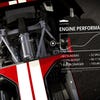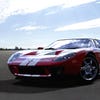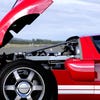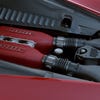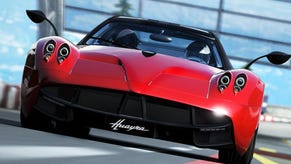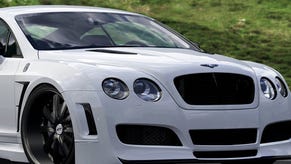Forza Motorsport 4
Formula win?
It's Forza Motorsport 4's official E3 party, and between a coterie of automotive exotica - a Gumpert Apollo rubs shoulders with an Aston Martin LMP1, while a Koenigsegg CCX sits shyly in the corner - Rampage Jackson is grinding to a set by Mixmaster Mike.
Just under 36 hours beforehand, Turn 10's Dan Greenawalt took his place at the frontline of Microsoft's Kinect assault at its E3 conference. Forza Motorsport 4, we were told, will transform the racing genre, and a well-choreographed trailer boasted cars modelled with unprecedented detail that can be explored through the power of the motion controller.
Through all this hype and noise, it's difficult to figure out what there is to really get excited about in Forza 4 - and beyond some shallow cries (more graphics! motion control!) it's just as hard trying to decipher what meaningful changes have been made to Turn 10's formula.
Stepping up to actually play the game, it's also easy to be a little complacent. Forza's handling has veered from the dry simulation of the second game to the more pliable cars of 3, but the one constant has been its forgiving nature. Within seconds it's clear that Forza has changed dramatically.
Switch off all the assists and engage Forza 4's all-new simulation handling mode and it's a strange and quite terrifying experience, a single lap of the fictional Alpine circuit seeing a Ferrari 599 spitting us into the scenery at every opportunity. The front engine, rear-wheel drive car lazily lunges into corners with heavy understeer before, just as it kisses the apex, snapping into aggressive oversteer that sends the rear flailing. After the relative stability of Forza 3's cars, it's a shock to find these cars so alive and so wild.
Turn 10's John Knowles smiles as we recount this experience to him later, going on to explain how the more involved handling has come about through the expansion of the existing partnership with tyre manufacturer Pirelli. "We've taken all their physical data and all their tyre deformation data and we've matched it against everything that we were doing," he says.
"We've learned what we were doing right, and learned what we could have been doing better, and then we pulled the trigger - and it was scary because everything's changed. The effects were immediate. The cars that are more prone to oversteer will be more prone to oversteer, and the cars that are prone to understeer will plough harder."
Playing to the handling's newfound dynamism is a fresh pass on the game's camera that takes some cues from Slightly Mad Studio's two Need for Speed: Shift games. In-car, the leather and plastic of cockpits is more defined, the field of view has been expanded and the pitch and yaw of the car is now more dramatically conveyed in the camera's movements.
It stops some way short of Shift's melodramatic sense of speed, but it does enough to provide a new layer of visual feedback as well as enlivening the ride and skimming off some of the series' starch. "We don't want to go all arcade, but Forza has always been, to be frank, pretty sterile," acknowledges Knowles. "We're taking the gloves off a little bit and we're letting the cars speak a little louder."
They're louder in a quite literal sense too. A new audio pass sees the Ferraris emit the throaty blasts that they should, while the purr of a muscle car has a satisfying bass. Even a road-spec Subaru Impreza belies its rally heritage with the bark it makes when you stab at the loud pedal.
Forza 4's debt to the Shift games doesn't go uncredited, and its renewed sense of speed isn't the only feature borrowed from EA's long-running Need for Speed series. Rivals Mode heads up a reinforced online offering that's also introducing dedicated car clubs, and it promises the kind of asynchronous online play that, for anyone who's been ensnared by Autolog, sounds strikingly familiar. Like Autolog (although as Turn 10 rightly points out, Criterion didn't exactly invent the idea of online leaderboards) it'll sit across the career and constantly feed into the player experience.


